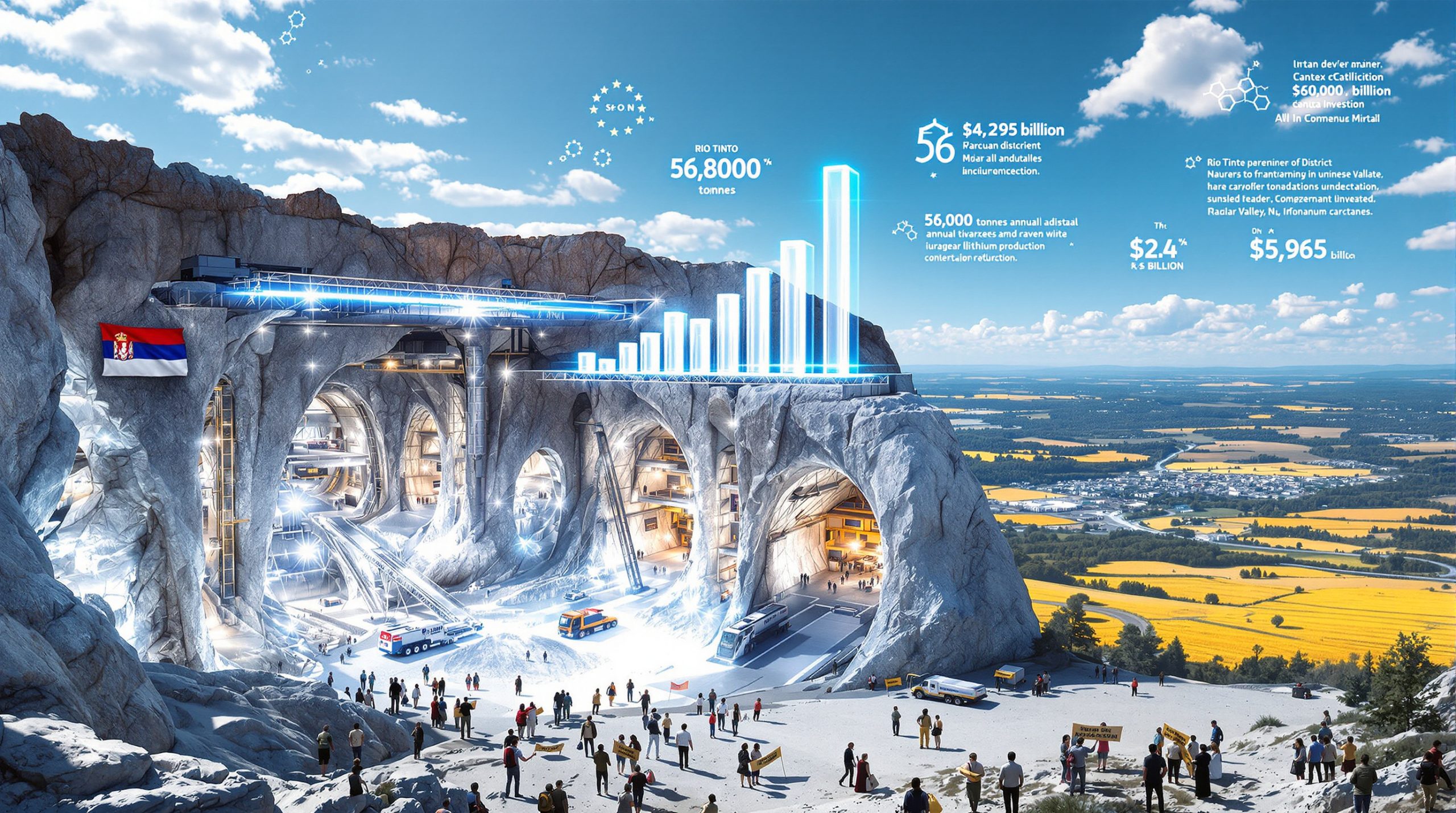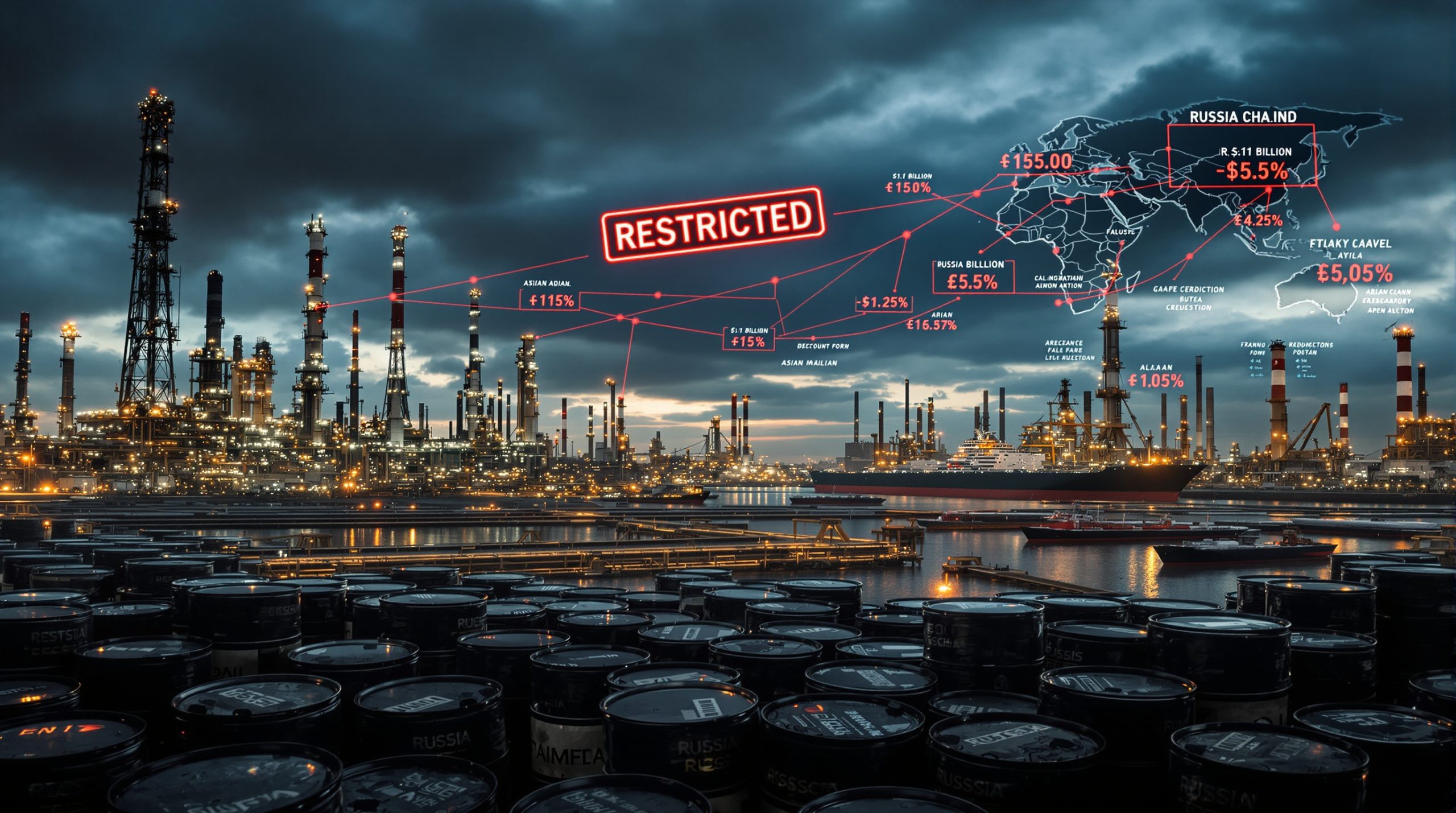The Evolution and Future of India's Mining Industry: A Comprehensive Analysis
India's mining sector is experiencing significant transformation, with over 95 different minerals being extracted across the country. Currently, approximately 1,200 major mineral mines are operational nationwide, spanning resources from iron ore and chromite to precious metals and critical minerals energy transition.
The industry underwent a fundamental shift in 2015 when the allocation system changed from a "first-come, first-served" approach to a transparent auction-based model. This reform has resulted in over 400 mineral blocks being auctioned, with about 50 blocks already operational, generating substantial revenue for state governments through both royalties and premium payments.
According to the Ministry of Mines, the mining industry in India contributes approximately 1.8% to India's GDP, with potential to reach 2.5% by 2030 through ongoing reforms and investments.
Key Minerals and Their Geographic Distribution
India's mineral wealth is distributed across various geological formations and states:
- Iron ore: Primarily found in Goa, Jharkhand, and Odisha, with reserves estimated at 28.52 billion tonnes
- Chromite and manganese: Concentrated in Odisha, with India holding the world's 4th largest chromite reserves
- Precious metals: Gold deposits in Karnataka (Kolar, Hutti), copper in Rajasthan (Khetri), lead and zinc across multiple regions
- Critical minerals: Graphite in Eastern India, lithium potential in Karnataka, and rare earth elements in coastal regions
Current Production Metrics and Economic Impact
The mining sector contributes significantly to India's economy through:
- Direct employment generation for over 1.1 million people
- Annual revenue collection exceeding ₹40,000 crore for state governments
- Supporting downstream industries including steel, cement, and manufacturing
- Reducing import dependencies for certain minerals while contributing 7-8% to total exports
How Has India's Mining Legislation Evolved Over Time?
Pre-2015 Regulatory Framework
Before 2015, India's mining sector operated under the original Mines and Minerals (Development and Regulation) Act of 1957, which followed a "first-come, first-served" approach for granting mineral concessions. This system included:
- Reconnaissance permits for preliminary exploration
- Prospecting licenses for detailed exploration
- Mining leases for extraction operations
This approach often resulted in delays, lack of transparency, and allegations of favoritism in the allocation process. The average time from application to grant of mining lease exceeded 7-10 years in many cases.
The 2015 Auction Regime Transformation
The 2015 amendment to the MMDR Act revolutionized the sector by:
- Introducing competitive bidding through auctions
- Eliminating discretionary allocations
- Creating transparent mechanisms for resource allocation
- Establishing revenue-sharing models with state governments
- Implementing the District Mineral Foundation (DMF) for community development
"The shift to auctions created transparency but also presented challenges with aggressive bidding, where some companies offered premiums as high as 150% of mineral value," notes mining economist Dr. Sandeep Mishra.
Post-2015 Policy Developments
Since the initial reforms, additional policy measures have been implemented:
- Extension of the auction model to coal and oil sectors
- Focus on critical minerals exploration through the 2021 amendments
- Streamlining of approval processes with average clearance time reduced by 60%
- Integration of environmental and social considerations
- Emphasis on value addition with incentives for domestic processing
The National Mineral Policy 2019 further strengthened this framework by promoting private sector participation and technological innovation while emphasizing sustainable mining industry evolution.
Critical Factors for Successful Mine Planning in India
Systematic Exploration and Resource Assessment
Successful mine development in India requires:
- Comprehensive geological surveys using advanced geophysical methods
- Modern exploration techniques including diamond drilling and 3D modeling
- Accurate resource estimation following UNFC or JORC codes
- Conversion of resources to reserves through detailed feasibility studies
- Integration of geological data using AI in mining operations
Recent geological surveys have identified potential mineral reserves worth ₹12 lakh crores that remain unexplored or under-explored.
Regulatory Compliance and Approvals
Mining operations must navigate:
- Environmental clearances through a multi-stage process
- Forest clearances requiring compensatory afforestation
- Land acquisition processes following the 2013 Land Acquisition Act
- Tribal rights considerations under the Forest Rights Act
- State and central government approvals across 15-20 departments
"The regulatory pathway for mine development in India has been streamlined but still requires navigation through complex multi-agency approvals. Companies that master this process gain significant competitive advantage." – Mining Journal, 2023
Technical and Economic Viability Assessment
Project success depends on:
- Mineral grade and quality evaluation using ISO-certified laboratories
- Processing requirements analysis with pilot plant testing
- Infrastructure availability assessment (power, water, transportation)
- Market demand forecasting with 15-20 year projections
- Capital and operational cost estimation with sensitivity analysis
Indian iron ore grades vary significantly by region, with Bailadila deposits containing 65-68% Fe content compared to the global average of 58-62%, making them highly competitive internationally.
Environmental and Social Governance (ESG) Implementation
Modern mining in India increasingly prioritizes:
- Environmental impact minimization through zero-discharge operations
- Community engagement with mandatory public hearings
- Sustainable mining practices including water recycling (80%+ in modern mines)
- Rehabilitation and restoration planning with progressive mine reclamation innovation
- Corporate social responsibility initiatives beyond statutory requirements
How Technology is Transforming India's Mining Operations
Digital Transformation Initiatives
The Indian mining sector is increasingly adopting:
- Geographic Information Systems (GIS) for spatial analysis and mineral targeting
- Remote sensing technologies utilizing satellite data for exploration
- Real-time data monitoring platforms for operational oversight
- Machine learning applications for predictive maintenance reducing downtime by 30%
- Drone surveys replacing traditional physical surveys with 90% time savings
The National Mineral Exploration Policy promotes the use of cutting-edge technologies through a 30% exploration expenditure reimbursement for successful discoveries.
Automation and Efficiency Improvements
Technological advancements are enabling:
- Targeted drilling based on advanced geological modeling reducing drill meters by 40%
- Improved mineral recovery rates from 65% to 90% in modern operations
- Enhanced safety through remote operations reducing accident rates by 60%
- Reduced environmental footprint with precision blasting techniques
- Lower operational costs through process optimization saving 15-20%
Value-Addition Technologies
The focus on downstream processing includes:
- Beneficiation techniques for upgrading low-grade ores below 58% Fe
- Pilot-scale plants for process development before full implementation
- Advanced metallurgical processes increasing metal recovery by 8-12%
- Zero-waste mining approaches with 98% material utilization
- Resource recovery from tailings and waste containing 0.5-1.5% residual metal values
International Technology Partnerships
India is actively seeking technology transfer through:
- Memorandums of Understanding with Australia, Russia, and Canada
- Collaboration with international mining companies like Rio Tinto and BHP
- Research partnerships with global institutions including CSIRO and Fraunhofer
- Adoption of best practices from established mining jurisdictions
- Joint ventures for technology implementation with risk-sharing mechanisms
How India Addresses Community Relations in Mining Areas
District Mineral Foundation (DMF) Initiatives
The 2015 mining reforms established the DMF, which:
- Operates in over 600 districts across mineral-rich states
- Collects funds equivalent to 10-30% of royalty from mining companies
- Has accumulated over ₹50,000 crore since inception
- Invests in affected communities' development through PMKKKY scheme
- Supports healthcare, education, and infrastructure in mining-affected areas
DMF implementation varies significantly by state, with Odisha and Jharkhand showing stronger governance models and transparent fund utilization.
Integrated Development Models
Modern mining projects in India increasingly incorporate:
- Schools and educational facilities benefiting over 100,000 students annually
- Healthcare infrastructure serving approximately 250,000 people in remote areas
- Vocational training centers with 70%+ placement rates
- Community infrastructure development including roads and water systems
- Local business development support creating auxiliary employment
Sustainable Development Frameworks
Mining operations are expected to implement:
- Environmental protection measures exceeding statutory requirements
- Social impact assessments with quarterly monitoring
- Community consultation processes throughout the mine lifecycle
- Benefit-sharing mechanisms beyond mandatory contributions
- Intergenerational equity considerations through trust funds
Balancing Economic Development with Social Welfare
The industry is working toward:
- Creating meaningful employment opportunities with 70%+ local hiring targets
- Developing local supply chains with ₹8,000+ crore annual procurement
- Transferring skills to local communities through certified training programs
- Ensuring post-mining sustainable livelihoods through economic diversification
- Preserving cultural heritage in mining regions through dedicated conservation
Opportunities for International Mining Companies in India
Open Investment Policies
India welcomes foreign participation through:
- 100% FDI permitted in the mining sector under automatic route
- Joint venture opportunities with established domestic partners
- Public-Private Partnership (PPP) models for exploration and development
- Technology transfer arrangements with tax incentives
- Production sharing contracts for high-risk exploration
Market Advantages for Investors
The Indian market offers significant benefits:
- Large domestic consumer base growing at 7-8% annually
- Per capita steel consumption projected to increase from 75kg to 160kg by 2030
- Infrastructure development requiring ₹111 lakh crore investment over 5 years
- Potential for mineral beneficiation opportunities with growing manufacturing base
- Strategic location for serving Asian markets with lower logistics costs
Resource Potential and Diversity
International companies can explore:
- Underexplored mineral provinces with only 10% of potential fully assessed
- Diverse geological environments spanning Archean to Recent formations
- Critical mineral opportunities aligned with global demand including lithium and cobalt
- Value-addition opportunities for existing resources through technology
- Technological upgradation of existing operations improving efficiency by 25-40%
Regulatory Improvements
Recent reforms have created a more favorable investment climate:
- Transparent auction processes with online monitoring
- Predictable fiscal regimes with standardized agreements
- Streamlined approval processes through single-window clearance
- Improved geological data availability through National Geoscience Data Repository
- Reduced regulatory uncertainties with clear dispute resolution mechanisms
How India is Addressing Critical Minerals for the Energy Transition
Current Status of Critical Mineral Resources
India's position on critical minerals includes:
- Limited domestic production meeting less than 10% of requirements
- Growing recognition of strategic importance for manufacturing and defense
- Reassessment of geological potential with new exploration targets
- Exploration initiatives targeting lithium, cobalt, and rare earth elements
- Development of processing capabilities for urban mining and recycling
India's first lithium reserves of 5.9 million tonnes were discovered in Jammu and Kashmir in 2023, marking a significant breakthrough for domestic supply.
International Partnerships and Supply Security
To ensure access to critical minerals, India is:
- Establishing MOUs with Australia, Argentina, and Chile for lithium access
- Developing joint ventures through KABIL (Khanij Bidesh India Ltd)
- Creating strategic mineral stockpiles for 3-6 months consumption
- Diversifying supply sources across multiple geographies
- Investing in overseas mining assets worth $500+ million
Domestic Exploration and Development
The government is prioritizing:
- Reassessment of existing geological data using AI and machine learning
- Advanced exploration techniques including hyperspectral remote sensing
- Research into extraction and processing technologies with ₹500 crore funding
- Development of domestic supply chains through PLI schemes
- Recycling and urban mining initiatives recovering up to 95% of critical metals
Policy Frameworks for Critical Minerals
Emerging policies focus on:
- Incentives for critical mineral exploration with 100% tax deduction
- Fast-track approval processes reducing clearance time by 50%
- Research and development support through dedicated institutions
- Public-private partnerships for technology development
- Integration with manufacturing and energy transition policies
Future Outlook for India's Mining Industry
Production Growth Projections
India's mining industry in India is targeting:
- Increased steel production to 300 million tonnes by 2030 (from current 120 MT)
- Expanded domestic mineral production reducing import bill by 50%
- Higher per capita consumption of minerals and metals matching global averages
- Growth in critical mineral production from near-zero to 25% self-sufficiency
- Development of new mineral provinces with 5-7 world-class discoveries
Technological Transformation
The industry is moving toward:
- Fully digitized operations with integrated command centers
- Increased automation reducing manual intervention by 70%
- Advanced processing technologies improving recoveries by 15-20%
- Reduced environmental footprint with 50% lower carbon emissions
- Integration of renewable energy providing 40%+ of operational power
Sustainability Initiatives
Future development will emphasize:
- Zero-waste mining approaches with complete material utilization
- Circular economy principles extending beyond mine boundaries
- Rehabilitation and restoration excellence exceeding global standards
- Community development integration through shared value creation
- Climate-responsive mining practices aligned with India's NDC commitments
Workforce Development and Skills
The evolving industry requires:
- Multidisciplinary professionals with cross-functional capabilities
- Digital skills integration across all operational levels
- Environmental management expertise with specialized certifications
- Community engagement specialists with anthropological understanding
- Innovation and adaptation capabilities for emerging challenges
Career Opportunities in India's Mining Sector
Emerging Professional Roles
The transforming industry needs:
- Exploration geologists with advanced remote sensing and modeling skills
- Mining engineers familiar with autonomous equipment and digital twins
- Environmental specialists for sustainable mining practices and carbon accounting
- Mineral economists understanding global market dynamics and supply chains
- IT professionals specializing in blockchain, AI, and IoT applications for mining
Skills Development Priorities
Young professionals should focus on:
- Interdisciplinary capabilities combining technical and management skills
- Field experience with digital technologies and data analysis
- Understanding of sustainability principles and ESG reporting
- Global market awareness including commodity cycles and geopolitics
- Innovation and problem-solving abilities for complex operational challenges
Educational Pathways
Career preparation includes:
- Specialized degrees in mining-related disciplines from premier institutions
- Continuing education in emerging technologies through online platforms
- Professional certifications in specialized areas like mineral resource estimation
- International exposure through exchange programs and global conferences
- Industry-academia collaborative programs offering hands-on experience
Growth Opportunities
The sector offers diverse career paths:
- Transition from government to private sector roles with 30-40% higher compensation
- Consulting and advisory services with global clients
- Specialized technical positions in critical mineral development
- Management and leadership roles in multinational mining companies
- Entrepreneurial opportunities in mining services and technology development
Frequently Asked Questions
What minerals are most abundant in India?
India has significant resources of iron ore (28.52 billion tonnes), bauxite (3.8 billion tonnes), coal (319 billion tonnes), manganese (495 million tonnes), chromite (203 million tonnes), limestone (95,623 million tonnes), and various industrial minerals. The country also has deposits of gold (654 tonnes), copper (1.5 billion tonnes of ore), lead-zinc (697 million tonnes), and emerging potential for critical minerals including recently discovered lithium reserves of 5.9 million tonnes.
How has the auction system changed India's mining industry?
The auction system introduced in 2015 has created greater transparency, increased government revenues by approximately ₹25,000 crore annually, accelerated project development by reducing discretionary delays, and eliminated favoritism in allocations. It has attracted serious investors while sometimes creating challenges through high premium bids that can affect project viability.
What environmental protections govern Indian mining operations?
Mining operations must comply with the Environmental Protection Act (1986), Forest Conservation Act (1980), Water and Air Acts, Biodiversity Act (2002), and specific mining regulations under the MMDR Act. Environmental impact assessments, forest clearances, and pollution control measures including zero liquid discharge and air quality monitoring are mandatory for all mining projects.
How does India's mining technology compare globally?
India is rapidly adopting global technologies but varies across operations. Large mines often use world-class technologies including autonomous equipment, drone surveys, and AI-based optimization systems comparable to Australian and Canadian operations. Smaller mines may use more traditional methods, creating a technology adoption gap. The digital transformation is accelerating across the sector with government support through the National Mineral Exploration Policy's technology incentives.
What role do critical minerals play in India's future strategy?
Critical minerals are increasingly central to India's resource strategy, with focused exploration, international partnerships through KABIL, and technology development to secure supplies for manufacturing, renewable energy, and defense applications. The government has identified 30 critical minerals essential for the country's economic security and has allocated ₹2,500 crore for exploration and development initiatives
Want to Capitalise on the Next Major Mineral Discovery?
Discovery Alert provides instant notifications on significant ASX mineral discoveries through its proprietary Discovery IQ model, delivering actionable insights for both short and long-term investors. Explore why major mineral discoveries can lead to substantial market returns by visiting Discovery Alert's dedicated discoveries page and position yourself ahead of the market.




